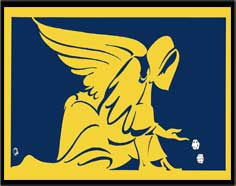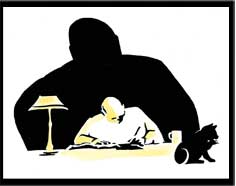Riley has been selected as an example of police officers who broke the law while still in the force, and then left the job to become major criminals.
His most notorious predecessor was John Wesley Egan, who started smuggling heroin into America in 1966 while still working for the NSW Special Branch. Using contacts on both sides of the law made in his work with the police, he formed a partnership with fellow cop Bryan Hill. They were so successful that both resigned from the force and relocated to America, and before long were running 20 couriers between Hong Kong, Sydney, and New York.
Egan had an agent who would buy the heroin from Chinese gangsters in Hong Kong and load it into specially made corsets and vests, hence the group’s nickname, the Corset Gang. They would place three couriers on the one flight along with a supervisor to make sure none absconded. Duplicate passports were used to hide details of where couriers had been previously. The couriers would fly to New York by circuitous routes to be met by Egan, who would sell the heroin to major black drug dealers who were front men for the mafia (which wanted to hide its involvement in the drug trade).
After six months Egan had more money than he knew what to do with, including a quarter of a million dollars stashed in various safe deposit boxes in Sydney. But a sharp-eyed Customs clerk became suspicious of the patterns of passport records for some of the couriers and notified the Commonwealth Police, who got onto the US Bureau of Narcotics. Egan was having a drink at Sydney Tattersall’s Club one evening when a detective he knew walked up to him and said, “They’re on to you.” Egan went home, flushed $200,000 of heroin down the toilet, and fled the country. He was caught in America, convicted and sent to gaol.
Murray Riley was a young policeman when he won a bronze medal in rowing with colleague Merv Wood (later a corrupt commissioner) at the Melbourne Olympics in 1956. He left the force in 1962 and was soon heavily involved in robbing Sydney’s registered clubs, by skimming poker machine profits, extorting money from club officials by force, and other methods. Bob Bottom’s investigation into such activities in clubs – a major branch of organised crime at the time – led to the establishment of the Moffitt Royal Commission in 1973. Riley was notorious for avoiding appearing before the commission, and Moffitt found it was “clear the police, both in their inquiries and their failure to investigate matters concerning Riley, had treated him with undue favour.”

Riley was well connected (one old friend was Lennie McPherson) and became a significant criminal figure. As well as his club activity (curtailed after the Moffitt royal commission), he had an involvement in half a dozen casinos, collecting protection money for Lennie McPherson. Along with Michael Moylan he was a transitional figure as he moved from the casino industry into the drug trade. He had a particular interest in opportunities abroad, and in the 1970s made good contacts with Asian drug suppliers and the mafia on the west coast of America, and began importing drugs to Australia.
His most ambitious scheme was a massive importation of 4.5 tonnes of high grade cannabis in 1978. He accumulated the necessary capital through heroin sales and bought the cananbis in Bangkok, and enlisted six men to assist with the operation. A chartered fishing vessel, the Choryo Maru, was hired in New Zealand and sailed to Thailand to collect the drugs. On the way back its engine failed in the Solomon Sea, so the drugs were unloaded into the wreck of a Japanese ship on a coral reef. Riley hired an Australian vessel, the Anoa, to sail from Cairns to the Solomons, where it collected as much of the cannabis as it could carry and returned to Australia. There Riley was arrested – an informer had alerted police to the operation – and later sentenced to 10 years gaol. On his release he went on to commit other crimes.
Just as the drug trade changed organised crime, so too did it change the relationship between criminals and police. The permanent and reliable relationships of old broke down. Fewer police were prepared to take bribes and corruption involving senior police largely stopped. But serious corruption persisted well into the 1990s, especially in the specialist squads and in busy crime areas such as Kings Cross, Parramatta and Fairfield.
In the 1970s and 1980s the so-called “Barbeque Set” of corrupt detectives took money from drug dealers and even arranged for crimes to be committed. These practices were passed on to younger police. Much attention has since been focussed on Roger Rogerson, who became notorious after killing drug dealer Warren Lanfranchi in 1981 and was later accused of supplying drugs, assault, bribery and conspiring to murder, but never convicted. He was twice convicted for lying in court and served two separate gaol terms.

It was rumoured Lanfranchi had been making waves for Rogerson’s cosy relationships with criminals including Arthur Neddy Smith, who later claimed Rogerson and his allies gave him a “green light” to commit armed hold-ups and distribute heroin.
As the drug trade came to dominate organised crime, corruption became more uncertain and dangerous than before. No police officer of modern times has had the power, or the wealth, of earlier corrupt officers such as Ray Kelly and Fred Krahe.
MAIN SOURCES: Drug Traffic by Alfred McCoy; Can of Worms II by Evan Whitton; The Godfather in Australia by Bob Bottom.






You must be logged in to post a comment.